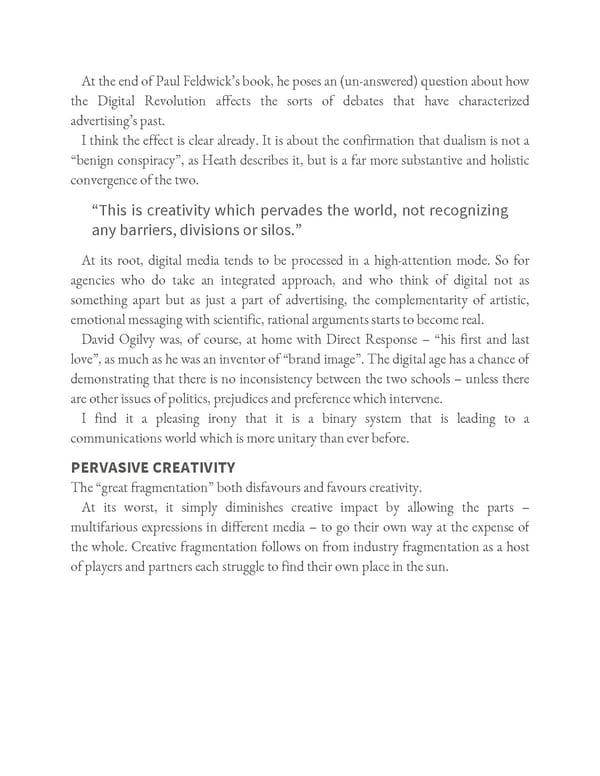At the end of Paul Feldwick’s book, he poses an (un-answered) question about how the Digital Revolution affects the sorts of debates that have characterized advertising’s past. I think the effect is clear already. It is about the confirmation that dualism is not a “benign conspiracy”, as Heath describes it, but is a far more substantive and holistic convergence of the two. “This is creativity which pervades the world, not recognizing any barriers, divisions or silos.” At its root, digital media tends to be processed in a high-attention mode. So for agencies who do take an integrated approach, and who think of digital not as something apart but as just a part of advertising, the complementarity of artistic, emotional messaging with scientific, rational arguments starts to become real. David Ogilvy was, of course, at home with Direct Response – “his first and last love”, as much as he was an inventor of “brand image”. The digital age has a chance of demonstrating that there is no inconsistency between the two schools – unless there are other issues of politics, prejudices and preference which intervene. I find it a pleasing irony that it is a binary system that is leading to a communications world which is more unitary than ever before. PERVASIVE CREATIVITY The “great fragmentation” both disfavours and favours creativity. At its worst, it simply diminishes creative impact by allowing the parts – multifarious expressions in different media – to go their own way at the expense of the whole. Creative fragmentation follows on from industry fragmentation as a host of players and partners each struggle to find their own place in the sun.
 Ogilvy on Advertising in the Digital Age Page 189 Page 191
Ogilvy on Advertising in the Digital Age Page 189 Page 191